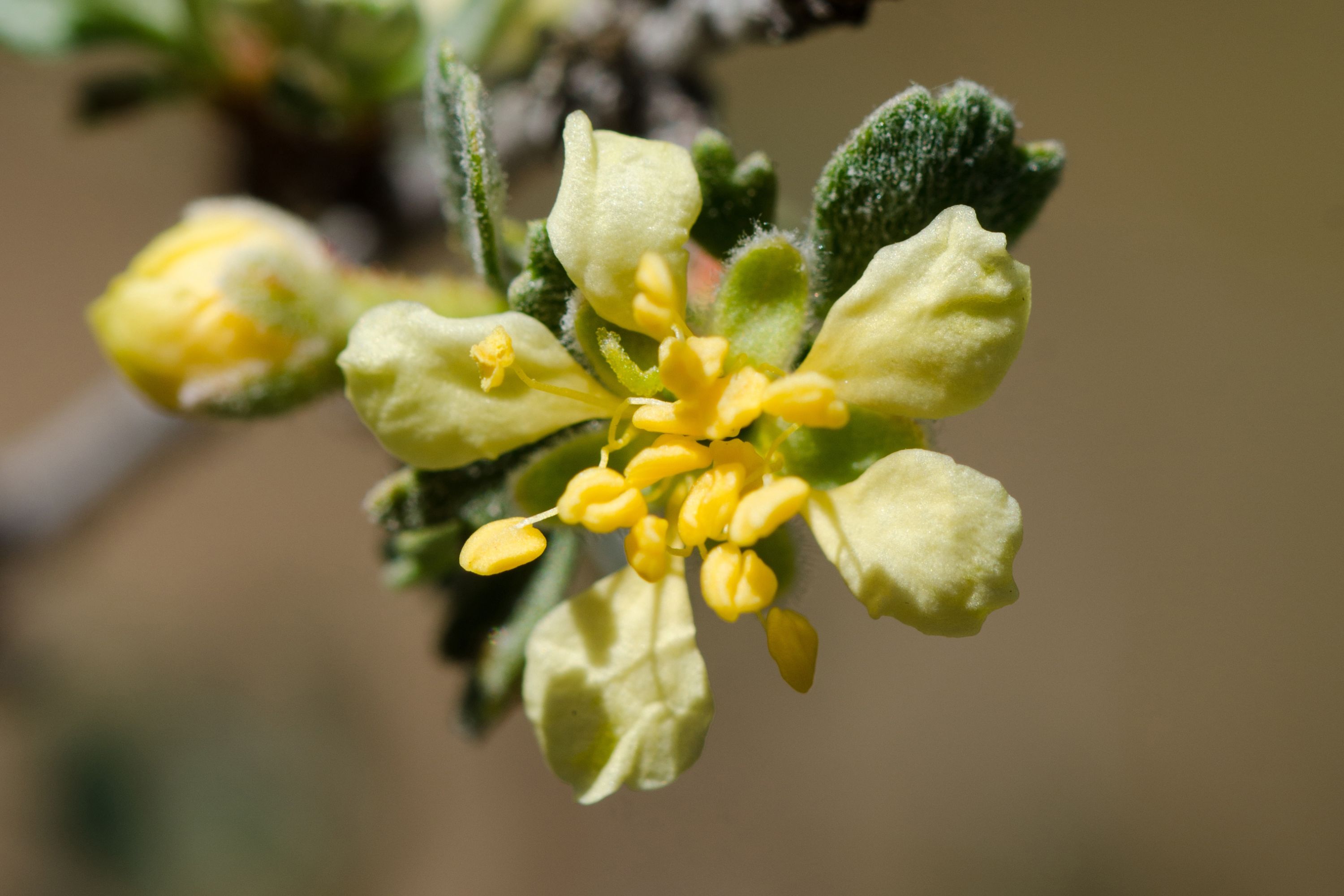Bitterbrush
(Purshia tridentata)

Description
Purshia tridentata, with the common name bitterbrush, is a shrub in the genus Purshia of the family Rosaceae. It is native to mountainous areas of western North America. Common names include antelope bitterbrush, antelope bush, buckbrush, quinine brush, and less commonly deerbrush, blackbrush, and greasewood. Some of these names are shared with other species. Purshia tridentata is a deciduous shrub growing to a height of 1–5 metres (3+1⁄2–16+1⁄2 feet). It has many branches and slender green, three- to five-lobed leaves 5–20 millimetres long. It is a nitrogen-fixing plant. The flowers are pale yellow, with five petals 6–8 mm long, and darker yellow anthers. The fruit is a cluster of dry, slender, leathery achenes 0.6–2 centimetres long. The plant is found from southeastern British Columbia in the north, east to Montana and Wyoming, south to New Mexico, and west in California. It grows on arid mountainsides and slopes, as well as rocky or drained soils with somewhat more moisture than the sagebrush steppe. It is often associated with Balsamorhiza as well as Wyethia species, and in southern areas hybridizes with Purshia stansburyana. In California it occurs between 700–3,400 m (2,300–11,200 ft) above sea level, including in the Peninsular Ranges, Transverse Ranges, and Sierra Nevada, and southern Cascade Range. Further north it occurs at lower elevations, such as at 320–1,065 m (1,050–3,494 ft) in British Columbia. Purshia (bitterbrush or cliff-rose) is a small genus of 5-8 species of flowering plants in the family Rosaceae, native to western North America, where they grow in dry climates from southeast British Columbia in Canada south throughout the western United States to northern Mexico. The classification of Purshia within the Rosaceae has been unclear. The genus was originally placed in the subfamily Rosoideae, but is now placed in subfamily Dryadoideae. They are deciduous or evergreen shrubs, typically reaching 0.3–5 m tall. The leaves are small, 1–3 cm long, deeply three- to five-lobed, with revolute margins. The flowers are 1–2 cm diameter, with five white to pale yellow or pink petals and yellow stamens. The fruit is a cluster of dry, slender, leathery achenes 2–6 cm long. The roots have root nodules that host the nitrogen-fixing bacterium Frankia. The evergreen species were treated separately in the genus Cowania in the past; this genus is still accepted by some botanists.
Taxonomic tree:







